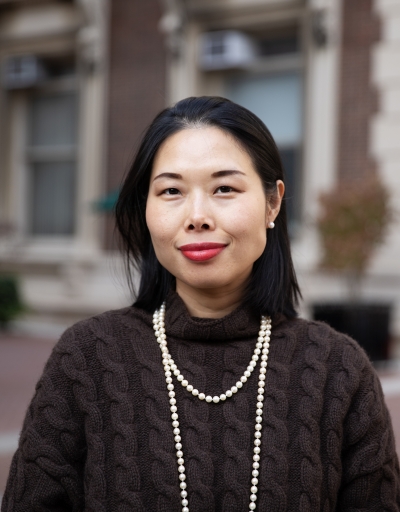
In this series, we speak with professors who lead different sections of the Core Curriculum to learn what they love about engaging with College students. This month we chat about Art Hum with Xiaohan Du GSAS’21, lecturer in the discipline of art history and archaeology. Du specializes in East Asian art, with a focus on medieval Sino-Japanese exchanges.
What is the best part about teaching the Core Curriculum?
The first thing I love about teaching at Columbia is its location in the City of New York. I think that — different from Lit Hum, CC and Music Hum — Art Hum is a course that really asks the student to engage with the physical objects they study, which is particularly valuable for the cultivation of one’s visual literacy in our image-saturated epoch. So for that purpose, there’s no better place to teach Art Hum than in New York, given the world-class museums and collections we have here.
The second thing I love about it is the students. I find it mesmerizing to engage with students and see what they’re thinking these days. Everybody comes to the table with a different set of life experiences and knowledge structures. And that is what makes the class exciting; I love that each cohort brings new light to the same set of objects that I teach.
How do you put your own spin on teaching Art Hum?
The official title of the class is “Art Humanities: Masterpieces of Western Art,” and I think we’re all aware of the potential problems with certain wordings in that title. My Ph.D. is in medieval East Asian art. So whenever possible I try to bring in pieces from East Asia — mostly Chinese, Japanese and Korean — and start things off by asking the students to contrast and compare objects from that part of the world with some works that we cover in Art Hum. And oftentimes, that juxtaposition spurs different kinds of conversations that are often quite illuminating.
For example, I teach Raphael in relation to the one-point linear perspective and how that transformed visuality to emphasize a rational organization of illusionistic pictorial space in Renaissance Italy. I bring in scenes from a 12th-century Japanese hand scroll, The Tale of Genji, and put them side by side with, say, The Marriage of the Virgin or The School of Athens, and then I ask the students to make sense of the 12th-century Japanese artists’ rather different approach to the construction of pictorial space, and how that might have served the pictorial purpose just as eloquently. By doing this, the students become aware that the one-point linear perspective is one among various systems of organizing pictorial space. So that’s my way of expanding, if you will, the periphery of “Western art” as defined in Art Hum.
What has been your favorite Core Curriculum teaching moment?
It has to be when I took a group of students to the Metropolitan Museum of Art. As I mentioned, the city offers invaluable resources for students in the sense that they can directly engage with the art objects instead of just looking at them on the screen as two-dimensional images. This is particularly important for understanding sculpture.
On my way out, a student of mine approached me and shared her experience. She had always been a science student and Art Hum was the first art history class she had ever taken. She told me that, for the first time, she was able to really notice the subtle differences in sculptures. In this case, she was referring to a sixth-century BCE Greek sculpture, Kouros, which I assigned for their visit to the Met. She said that it was as if her eyes had been opened and she was able to look at that sculpture in a way she had never experienced before. Someone who had never really taken an interest in art before said that they — for the first time — noticed the way a work of art interacted with the space around it and learnt to articulate how it made them feel. For me, this is the kind of moment that makes teaching Art Hum truly fulfilling and meaningful.